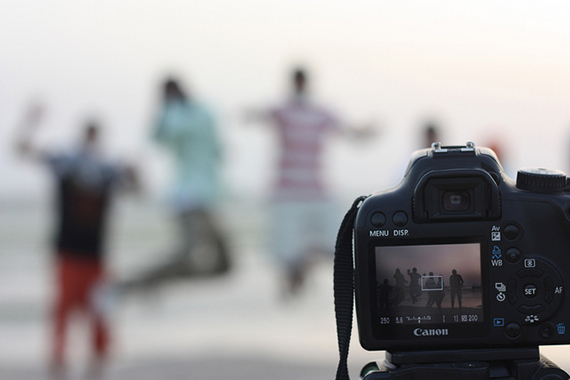Photography has entered a whole new world, with remarkable changes in technology in just a few short years. One thing has not changed, however; the camera—not the computer—is still a good photographer’s most important tool.

photo by Nasser ..
In recent times I have spoken to a few very disgruntled beginners, who had signed up and paid good money to attend a course in ‘digital photography.’ On arrival at the first class, they were told to put their cameras away—they would not be needing them. This was not actually a course in photography; it was a course in photo editing. So instead of being taught how to take better photos, they were being taught how to fix up their mistakes.
I would have asked for my money back, for this course was not delivering what it promised.
Was this a case of blatant false advertising? From the customer’s point of view, it certainly was. But believe it or not, the teacher may not have seen it that way. It is an alarming truth that some people see software, not the camera, as the cornerstone of photography.
When the digital photography revolution began, it excited two groups of people. First there were the traditional photographers, who embraced the cost savings and convenience offered by digital photography. For them, it was a chance to do what they had always done, but to do it in a format more suited to the modern age.
Then there were the computer types, who perhaps didn’t know much about photography and weren’t very good at it. For these people, photography had entered their world in a big way. They may not have known much about art or technology, but they sure knew plenty about software. In this world, they were way ahead of traditional photographers who had grown up with SLR cameras, film, and the darkroom.
So, does being good with software make you a good photographer? Of course not.
With software, you can achieve amazing things. You can do everything from tweaking the contrast in an image to moving objects around and making your photo look like it was a painting. But there are also plenty of things, essential things, that you can’t do. You can’t make an out-of-focus subject in focus. You can’t un-blur a moving subject that was blurred because the photographer used the wrong shutter speed.
Technical issues aside, there is also the great sense of honest satisfaction a photographer feels when they are able to capture a perfect image ‘in camera.’

photo by Hillary Boles
I met a man who told me about his visit to Sea World. He took a bunch of photos of his wife, but he wasn’t happy with them because the skies were grey and there were lots of tourists around. So he set to work on a computer, and over three days he transformed the sky in every photo to blue and removed all those pesky tourists. He had successfully manufactured a “memory” of a day that never actually happened.
To each his own, I guess. To me it was just creepy.
In some industries, like advertising, the only thing that matters is the image; how you do it is irrelevant, as long as you produce the result. But for the average Joe, photography is about capturing memories to revisit and share with others.
I am not suggesting software has no place in photography. In fact, even devoted digital fans recognize that most images need a little tweaking of saturation and contrast to bring them up to print quality.
The point is, software is no substitute for camera skills. It is great, perhaps even essential, to know how to work on a photo after the event. But that cannot take the place of learning how to use a camera, how to appreciate light, and how to compose a great image.
Beginners beware; there are people out there who will hold you back by telling you that notions of aperture, shutter speed, and ISO are outdated relics of film photography. In fact, by learning these photography essentials, you will develop skills that will reduce your reliance on computers to fix your mistakes.
The benefits? Well, first there is the satisfaction of knowing your picture was captured with your own skill and is a true reflection of the moment as it happened.

photo by Andrew
Need something more practical? Think about this. Producing a good image from a poorly taken photo can take hours sitting in front of a computer. How long does it take to get it right in the first place? About 1/500 of a second.
About the Author
Andrew Goodall writes for http://www.naturesimage.com.au and is a nature photographer based in Australia. He manages a gallery in Montville full of landscape photography from throughout Australia.
Go to full article: Photo Editing is No Substitute for Photography Technique
What are your thoughts on this article? Join the discussion on Facebook
PictureCorrect subscribers can also learn more today with our #1 bestseller: The Photography Tutorial eBook
The post Photo Editing is No Substitute for Photography Technique appeared first on PictureCorrect.
from PictureCorrect https://ift.tt/2AcR6sg
via IFTTT






0 kommenttia:
Lähetä kommentti